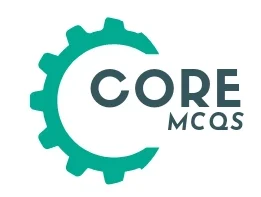12th class (Fsc) Chemistry unit 10 MCQs
26. Alcohols react with HX in the presence of ZnCI2 as a catalyst to give:
a. Alkyl halides
b. Aldehyde
c. Aldols
d. Acid halides
27. Alcohols reacts with PX3 or PX5 to give:
a. Acid halides
b. Alkyl halides
c. Benzene
d. Aldehydes
28. Alcohols react with PX3 or PX5 to give:
a. Acid halides
b. Alkyl halides
c. Benzene
d. Aldehydes
29. R-CI or R-Br reacts with nal to give:
a. Iodic acid
b. Alkyl iodide
c. Iodie
d. Acid iodide
30. In SN 1 stand for:
a. Molarity
b. No of steps of reaction
c. Molality
d. Molecularity
31. SN 1 reactions are:
a. Three steps reactions
b. One step reactions
c. Four steps reactions
d. Two step reactions
32. The geometry of carbonium ion formed in SN 1 mechanism is:
a. Triangular planar
b. Tetrahedral
c. Hexagonal
d. Square planer
33. Tertiary alkyl halides are practically inert to substitution by SN 2 mechanism because of:
a. Instability
b. Insolubility
c. Stearic hindrance
d. Inductive effect
34. Unimolecular substitution reactions are always complete in:
a. Three steps
b. One steps
c. Four steps
d. Two steps
35. Attacking nucleophile + alkyl halide → organic compound +?
a. Hydronium ion
b. Alkaloid ion
c. Carbonium
d. Halide ion
36. Rate determining step in SN 1 type reaction is always the:
a. Slow step
b. First step
c. None of these
d. Intermediate step
37. Which compound reacts most rapidly by an SN 1 mechanism?
a. Isopropyl chloride
b. Methyl chloride
c. Terbutylchloride
d. Ethyl chloride
38. SN 1 reaction can be best carried out with:
a. Tertiary alkyl halides
b. Primary alkyl halides
c. Secondary alkyl halides
d. All of these
39. Generally tertiary alkyl halides give:
a. SN 3 reaction
b. SN 1 reaction
c. SN 4 reaction
d. SN 2 reaction
40. Elimination unimolecular reaction involve:
a. Third order kinetics
b. First order kinetics
c. Zero order kinetics
d. Second order kinetics
41. A carbo atom carrying a negative charge and attached to three other atoms or group is called:
a. Carbanion
b. Oxonium ion
c. Carbene
d. Carbonium opn
42. The SN reaction whose rate of reaction depends upon the concentration of two molecule is called:
a. SN 3 reaction
b. SN 1 reaction
c. SN 4 reaction
d. SN 2 reaction
43. Bimolecular nucleophilic substitution reactions always complete in:
a. Three steps
b. Single step
c. Fur steps
d. Two steps
44. Normally SN 1 mechanism is given by:
a. Tertiary alkyl halides
b. Primary alkyl halides
c. Aryl halides
d. Secondary alkyl halides
45. The reactions of alkyl halides with sodium metal in the presence of ether to form alkane is known as:
a. Sabatier
b. Wurtz reaction
c. Kolbe’s synthesis
d. Frankland’s reaction
46. Which one of the following product will be formed in wurtz reaction when sodium metal reacts with ethyl chloride in anhydrous ether?
a. Propane
b. Methane
c. Butane
d. Ethane
47. Which one of the following reactant will be required to form ethyl alcohol from ethyl bromide?
a. Alkaline KMnO4
b. Alcoholic KOH
c. Sodium metal in ether
d. Aqueous KOH
48. Which one of the following reactant will be required to form ethane from ethyl chloride?
a. Alkaline KMnO4
b. Alcoholic KOH
c. Zn+dil.HCL
d. Aqueous KOH
49. When ethyl bromide reacts with Na in the presence of an inert solvent, it forms:
a. Propane
b. Methane
c. Butane
d. Ethane
50. Alkyl halides on treatment with Zn and HCL gives:
a. Alkanes
b. Alkynes
c. Alcohol
d. Alkenes
